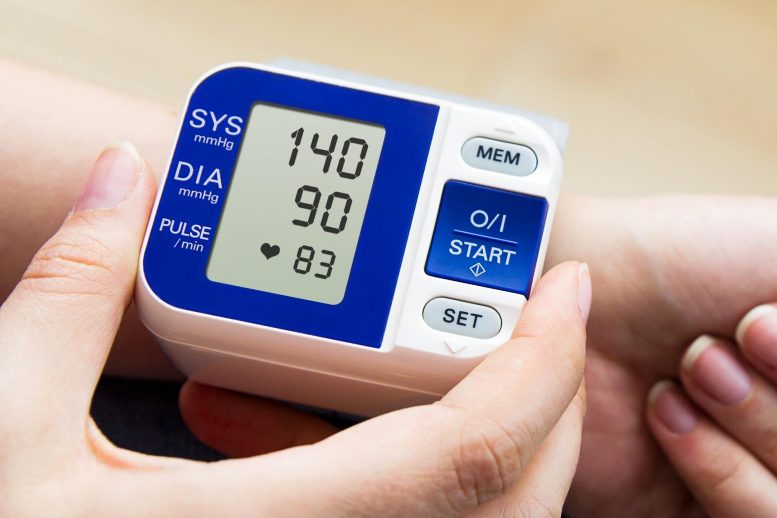
The COVID-19 pandemic is linked to elevated blood pressure levels among middle-aged adults throughout the United States.
- Blood pressure control worsened in both men and women with the onset of the COVID-19 pandemic in the United States in 2020.
- Women and older adults had the highest blood pressure measures during the pandemic.
The COVID-19 pandemic is associated with higher blood pressure levels among middle-aged adults across the U.S., according to new research published on December 6, 2021, in the American Heart Association’s flagship journal Circulation.
According to the American Heart Association, nearly half of American adults have high blood pressure, a leading cause of heart disease, and nearly 75% of all cases remain above the recommended blood pressure levels. Stay-at-home orders were implemented across the U.S. between March and April 2020 in response to the COVID-19 pandemic. This resulted in a shift to remote health care for numerous chronic health conditions including high blood pressure and had a negative impact on healthy lifestyle behaviors for many people.
“At the start of the pandemic, most people were not taking good care of themselves. Increases in blood pressure were likely related to changes in eating habits, increased alcohol consumption, less physical activity, decreased medication adherence, more emotional stress and poor sleep,” said lead study author Luke J. Laffin, M.D., co-director of the Center for Blood Pressure Disorders at the Cleveland Clinic in Cleveland, Ohio. “And we know that even small rises in blood pressure increase one’s risk of stroke and other adverse cardiovascular disease events.”
For this analysis, researchers accessed de-identified health data from an employee wellness program (including employees and spouses/partners) to assess changes in blood pressure levels before and during the COVID-19 pandemic. The data included nearly a half million adults across the U.S., average age of 46 years, 54% women, who had their blood pressure measured during an employee health screening every year from 2018 through 2020. Participants were categorized into four groups: normal, elevated, stage 1 hypertension and stage 2 hypertension based on the current American Heart Association blood pressure guidelines.
The researchers compared monthly average blood pressures between 2018 and 2019 and blood pressure measures in January through March 2019 to January through March 2020 (pre-pandemic). They then reviewed blood pressure changes comparing April to December 2020 (during the pandemic) to April to December 2019 (pre-pandemic).
The analysis found:
- During the pandemic (April to December 2020), average increases in blood pressure each month ranged from 1.10 to 2.50 mm Hg higher for systolic blood pressure (the top number in a blood pressure reading that indicates how much pressure the blood is exerting against the artery walls with each contraction) and 0.14 to 0.53 mm Hg for diastolic blood pressure (the bottom number in a blood pressure reading indicates how much pressure the blood is exerting against the artery walls while the heart is resting, between contractions) compared to the same time period in 2019. Before the pandemic, blood pressure measures were largely unchanged when comparing study years.
- Higher increases in blood pressure measures were seen among women for both systolic and diastolic blood pressure, among older participants for systolic blood pressure, and in younger participants for diastolic blood pressure.
- From April to December 2020, compared to the pre-pandemic time period, more participants (26.8%) were re-categorized to a higher blood pressure category, while only 22% of participants moved to a lower blood pressure category.
“From a public health perspective, during a pandemic, getting vaccinated and wearing a mask are important. However, the results of our research reinforce the need to also be mindful of chronic health conditions such as the worsening of blood pressure,” Laffin said. “Even in the midst of the pandemic, it’s important to pay attention to your blood pressure and your chronic medical conditions. Get regular exercise, eat a healthy diet, and monitor your blood pressure and cholesterol. See your doctor regularly to learn how to manage your cardiovascular risk factors.”
The study authors are following up on these results to find out if this trend continued in 2021, which may indicate a forthcoming wave of strokes and heart attacks.
“Unfortunately, this research confirms what is being seen across the country – the COVID-19 pandemic has had and will continue to have long-reaching health impacts across the country and particularly related to uncontrolled hypertension,” said Eduardo Sanchez, M.D., M.P.H., FAAFP, FAHA, the American Heart Association’s chief medical officer for prevention. “These results validate why the American Heart Association’s National Hypertension Control Initiative (NHCI) is critically important. With a particular emphasis on historically under-resourced communities in the United States, the comprehensive program supports health care teams at community health centers through regular blood pressure management training, technical assistance and resources that include the proper blood pressure measurement technique, self-measured blood pressure monitoring and management, medication adherence and healthy lifestyle services.”
The study’s main limitation is that the key cause for higher blood pressure is not clear. Additionally, the study’s findings may not be representative of adults who do not participate in an employee wellness program.
Reference: “Rise in Blood Pressure Observed Among US Adults During the COVID-19 Pandemic” by Luke J. Laffin, Harvey W. Kaufman, Zhen Chen, Justin K. Niles, Andre R. Arellano, Lance A. Bare and Stanley L. Hazen, 6 December 2021, Circulation.
DOI: 10.1161/CIRCULATIONAHA.121.057075
Co-authors are Harvey W. Kaufman, M.D., M.B.A.; Zhen Chen, M.S.; Justin K. Niles, M.A.; Andre R. Arellano, B.S.; Lance A. Bare, Ph.D.; and Stanley L. Hazen, M.D., Ph.D.









Be the first to comment on "COVID-19 Pandemic Associated With Higher Blood Pressure Across the United States"